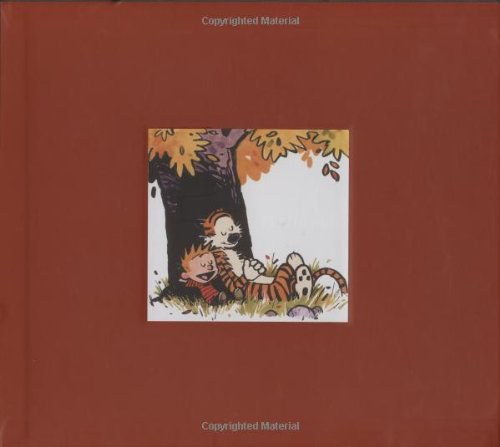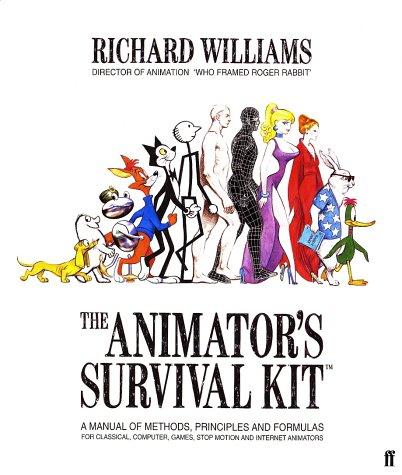
Bertrand Meyer《Object-Oriented Software Construction》
书刊介绍
内容简介
Contents
Preface V
Foreword To The Second Edition Xiii
About The Accompanying Cd-Rom Xiv
On The Bibliography, Internet Sources And Exercises Xv
Contents Xvii
Part A: The Issues 1
Chapter 1: Software Quality 3
1.1 External And Internal Factors 3
1.2 A Review Of External Factors 4
1.3 About Software Maintenance 17
1.4 Key Concepts Introduced In This Chapter 19
1.5 Bibliographical Notes 19
Chapter 2: Criteria Of Object Orientation 21
2.1 On The Criteria 21
2.2 Method And Language 22
2.3 Implementation And Environment 31
2.4 Libraries 33
2.5 For More Sneak Preview 34
2.6 Bibliographical Notes And Object Resources 34
Part B: The Road To Object Orientation 37
Chapter 3: Modularity 39
3.1 Five Criteria 40
3.2 Five Rules 46
3.3 Five Principles 53
3.4 Key Concepts Introduced In This Chapter 64
3.5 Bibliographical Notes 64
Exercises 65
Chapter 4: Approaches To Reusability 67
4.1 The Goals Of Reusability 68
4.2 What Should We Reuse? 70
4.3 Repetition In Software Development 74
4.4 Non-Technical Obstacles 74
4.5 The Technical Problem 81
4.6 Five Requirements On Module Structures 83
4.7 Traditional Modular Structures 89
4.8 Overloading And Genericity 93
4.9 Key Concepts Introduced In This Chapter 98
4.10 Bibliographical Notes 99
Chapter 5: Towards Object Technology 101
5.1 The Ingredients Of Computation 101
5.2 Functional Decomposition 103
5.3 Object-Based Decomposition 114
5.4 Object-Oriented Software Construction 116
5.5 Issues 117
5.6 Key Concepts Introduced In This Chapter 119
5.7 Bibliographical Notes 119
Chapter 6: Abstract Data Types 121
6.1 Criteria 122
6.2 Implementation Variations 122
6.3 Towards An Abstract View Of Objects 126
6.4 Formalizing The Specification 129
6.5 From Abstract Data Types To Classes 142
6.6 Beyond Software 147
6.7 Supplementary Topics 148
6.8 Key Concepts Introduced In This Chapter 159
6.9 Bibliographical Notes 160
Exercises 161
Part C: Object-Oriented Techniques 163
Chapter 7: The Static Structure: Classes 165
7.1 Objects Are Not The Subject 165
7.2 Avoiding The Standard Confusion 166
7.3 The Role Of Classes 169
7.4 A Uniform Type System 171
7.5 A Simple Class 172
7.6 Basic Conventions 177
7.7 The Object-Oriented Style Of Computation 181
7.8 Selective Exports And Information Hiding 191
7.9 Putting Everything Together 194
7.10 Discussion 203
7.11 Key Concepts Introduced In This Chapter 213
7.12 Bibliographical Notes 215
Exercises 216
Chapter 8: The Run-Time Structure: Objects 217
8.1 Objects 218
8.2 Objects As A Modeling Tool 228
8.3 Manipulating Objects And References 231
8.4 Creation Procedures 236
8.5 More On References 240
8.6 Operations On References 242
8.7 Composite Objects And Expanded Types 254
8.8 Attachment: Reference And Value Semantics 261
8.9 Dealing With References: Benefits And Dangers 265
8.10 Discussion 270
8.11 Key Concepts Introduced In This Chapter 276
8.12 Bibliographical Notes 277
Exercises 277
Chapter 9: Memory Management 279
9.1 What Happens To Objects 279
9.2 The Casual Approach 291
9.3 Reclaiming Memory: The Issues 293
9.4 Programmer-Controlled Deallocation 294
9.5 The Component-Level Approach 297
9.6 Automatic Memory Management 301
9.7 Reference Counting 302
9.8 Garbage Collection 304
9.9 Practical Issues Of Garbage Collection 309
9.10 An Environment With Memory Management 312
9.11 Key Concepts Introduced In This Chapter 315
9.12 Bibliographical Notes 315
Exercises 316
Chapter 10: Genericity 317
10.1 Horizontal And Vertical Type Generalization 317
10.2 The Need For Type Parameterization 318
10.3 Generic Classes 320
10.4 Arrays 325
10.5 The Cost Of Genericity 328
10.6 Discussion: Not Done Yet 329
10.7 Key Concepts Introduced In This Chapter 329
10.8 Bibliographical Notes 330
Exercises 330
Chapter 11: Design By Contract: Building Reliable Software 331
11.1 Basic Reliability Mechanisms 332
11.2 About Software Correctness 333
11.3 Expressing A Specification 334
11.4 Introducing Assertions Into Software Texts 337
11.5 Preconditions And Postconditions 338
11.6 Contracting For Software Reliability 341
11.7 Working With Assertions 348
11.8 Class Invariants 363
11.9 When Is A Class Correct? 369
11.10 The Adt Connection 373
11.11 An Assertion Instruction 378
11.12 Loop Invariants And Variants 380
11.13 Using Assertions 389
11.14 Discussion 398
11.15 Key Concepts Introduced In This Chapter 406
11.16 Bibliographical Notes 407
Exercises 408
Postscript: The Ariane 5 Failure 410
Chapter 12: When The Contract Is Broken: Exception Handling 411
12.1 Basic Concepts Of Exception Handling 411
12.2 Handling Exceptions 414
12.3 An Exception Mechanism 419
12.4 Exception Handling Examples 422
12.5 The Task Of A Rescue Clause 427
12.6 Advanced Exception Handling 431
12.7 Discussion 435
12.8 Key Concepts Introduced In This Chapter 437
12.9 Bibliographical Notes 438
Exercises 438
Chapter 13: Supporting Mechanisms 439
13.1 Interfacing With Non-O-O Software 439
13.2 Argument Passing 444
13.3 Instructions 447
13.4 Expressions 452
13.5 Strings 456
13.6 Input And Output 457
13.7 Lexical Conventions 457
13.8 Key Concepts Introduced In This Chapter 458
Exercises 458
Chapter 14: Introduction To Inheritance 459
14.1 Polygons And Rectangles 460
14.2 Polymorphism 467
14.3 Typing For Inheritance 472
14.4 Dynamic Binding 480
14.5 Deferred Features And Classes 482
14.6 Redeclaration Techniques 491
14.7 The Meaning Of Inheritance 494
14.8 The Role Of Deferred Classes 500
14.9 Discussion 507
14.10 Key Concepts Introduced In This Chapter 516
14.11 Bibliographical Notes 517
Exercises 517
Chapter 15: Multiple Inheritance 519
15.1 Examples Of Multiple Inheritance 519
15.2 Feature Renaming 535
15.3 Flattening The Structure 541
15.4 Repeated Inheritance 543
15.5 Discussion 563
15.6 Key Concepts Introduced In This Chapter 566
15.7 Bibliographical Notes 567
Exercises 567
Chapter 16: Inheritance Techniques 569
16.1 Inheritance And Assertions 569
16.2 The Global Inheritance Structure 580
16.3 Frozen Features 583
16.4 Constrained Genericity 585
16.5 Assignment Attempt 591
16.6 Typing And Redeclaration 595
16.7 Anchored Declaration 598
16.8 Inheritance And Information Hiding 605
16.9 Key Concepts Introduced In This Chapter 609
16.10 Bibliographical Note 610
Exercises 610
Chapter 17: Typing 611
17.1 The Typing Problem 611
17.2 Static Typing: Why And How 615
17.3 Covariance And Descendant Hiding 621
17.4 First Approaches To System Validity 628
17.5 Relying On Anchored Types 630
17.6 Global Analysis 633
17.7 Beware Of Polymorphic Catcalls! 636
17.8 An Assessment 639
17.9 The Perfect Fit 640
17.10 Key Concepts Studied In This Chapter 641
17.11 Bibliographical Notes 641
Chapter 18: Global Objects And Constants 643
18.1 Constants Of Basic Types 643
18.2 Use Of Constants 645
18.3 Constants Of Class Types 646
18.4 Applications Of Once Routines 648
18.5 Constants Of String Type 653
18.6 Unique Values 654
18.7 Discussion 656
18.8 Key Concepts Introduced In This Chapter 659
18.9 Bibliographical Notes 660
Exercises 660
Part D: Object-Oriented Methodology:
Applying The Method Well 661
Chapter 19: On Methodology 663
19.1 Software Methodology: Why And What 663
19.2 Devising Good Rules: Advice To The Advisors 664
19.3 On Using Metaphors 671
19.4 The Importance Of Being Humble 673
19.5 Bibliographical Notes 674
Exercises 674
Chapter 20: Design Pattern: Multi-Panel Interactive Systems 675
20.1 Multi-Panel Systems 675
20.2 A Simple-Minded Attempt 677
20.3 A Functional, Top-Down Solution 678
20.4 A Critique Of The Solution 682
20.5 An Object-Oriented Architecture 684
20.6 Discussion 693
20.7 Bibliographical Note 694
Chapter 21: Inheritance Case Study: “undo” In An Interactive
System 695
21.1 Perseverare Diabolicum 695
21.2 Finding The Abstractions 699
21.3 Multi-Level Undo-Redo 704
21.4 Implementation Aspects 707
21.5 A User Interface For Undoing And Redoing 711
21.6 Discussion 712
21.7 Bibliographical Notes 715
Exercises 715
Chapter 22: How To Find The Classes 719
22.1 Studying A Requirements Document 720
22.2 Danger Signals 726
22.3 General Heuristics For Finding Classes 731
22.4 Other Sources Of Classes 735
22.5 Reuse 740
22.6 The Method For Obtaining Classes 741
22.7 Key Concepts Introduced In This Chapter 743
22.8 Bibliographical Notes 744
Chapter 23: Principles Of Class Design 747
23.1 Side Effects In Functions 748
23.2 How Many Arguments For A Feature? 764
23.3 Class Size: The Shopping List Approach 770
23.4 Active Data Structures 774
23.5 Selective Exports 796
23.6 Dealing With Abnormal Cases 797
23.7 Class Evolution: The Obsolete Clause 802
23.8 Documenting A Class And A System 803
23.9 Key Concepts Introduced In This Chapter 806
23.10 Bibliographical Notes 806
Exercises 807
Chapter 24: Using Inheritance Well 809
24.1 How Not To Use Inheritance 809
24.2 Would You Rather Buy Or Inherit? 812
24.3 An Application: The Handle Technique 817
24.4 Taxomania 820
24.5 Using Inheritance: A Taxonomy Of Taxonomy 822
24.6 One Mechanism, Or More? 833
24.7 Subtype Inheritance And Descendant Hiding 835
24.8 Implementation Inheritance 844
24.9 Facility Inheritance 847
24.10 Multiple Criteria And View Inheritance 851
24.11 How To Develop Inheritance Structures 858
24.12 A Summary View: Using Inheritance Well 862
24.13 Key Concepts Introduced In This Chapter 863
24.14 Bibliographical Notes 863
24.15 Appendix: A History Of Taxonomy 864
Exercises 869
Chapter 25: Useful Techniques 871
25.1 Design Philosophy 871
25.2 Classes 872
25.3 Inheritance Techniques 873
Chapter 26: A Sense Of Style 875
26.1 Cosmetics Matters! 875
26.2 Choosing The Right Names 879
26.3 Using Constants 884
26.4 Header Comments And Indexing Clauses 886
26.5 Text Layout And Presentation 891
26.6 Fonts 900
26.7 Bibliographical Notes 901
Exercises 902
Chapter 27: Object-Oriented Analysis 903
27.1 The Goals Of Analysis 903
27.2 The Changing Nature Of Analysis 906
27.3 The Contribution Of Object Technology 907
27.4 Programming A Tv Station 907
27.5 Expressing The Analysis: Multiple Views 914
27.6 Analysis Methods 917
27.7 The Business Object Notation 919
27.8 Bibliography 922
Chapter 28: The Software Construction Process 923
28.1 Clusters 923
28.2 Concurrent Engineering 924
28.3 Steps And Tasks 926
28.4 The Cluster Model Of The Software Lifecycle 926
28.5 Generalization 928
28.6 Seamlessness And Reversibility 930
28.7 With Us, Everything Is The Face 933
28.8 Key Concepts Covered In This Chapter 934
28.9 Bibliographical Notes 934
Chapter 29: Teaching The Method 935
29.1 Industrial Training 935
29.2 Introductory Courses 937
29.3 Other Courses 941
29.4 Towards A New Software Pedagogy 942
29.5 An Object-Oriented Plan 946
29.6 Key Concepts Studied In This Chapter 948
29.7 Bibliographical Notes 948
Part E: Advanced Topics 949
Chapter 30: Concurrency, Distribution, Client-Server And
The Internet 951
30.1 A Sneak Preview 951
30.2 The Rise Of Concurrency 953
30.3 From Processes To Objects 956
30.4 Introducing Concurrent Execution 964
30.5 Synchronization Issues 977
30.6 Accessing Separate Objects 982
30.7 Wait Conditions 990
30.8 Requesting Special Service 998
30.9 Examples 1003
30.10 Towards A Proof Rule 1022
30.11 A Summary Of The Mechanism 1025
30.12 Discussion 1028
30.13 Key Concepts Introduced In This Chapter 1032
30.14 Bibliographical Notes 1033
Exercises 1035
Chapter 31: Object Persistence And Databases 1037
31.1 Persistence From The Language 1037
31.2 Beyond Persistence Closure 1039
31.3 Schema Evolution 1041
31.4 From Persistence To Databases 1047
31.5 Object-Relational Interoperability 1048
31.6 Object-Oriented Database Fundamentals 1050
31.7 O-O Database Systems: Examples 1055
31.8 Discussion: Beyond O-O Databases 1058
31.9 Key Concepts Studied In This Chapter 1060
31.10 Bibliographical Notes 1061
Exercises 1062
Chapter 32: Some O-O Techniques For Graphical Interactive
Applications 1063
32.1 Needed Tools 1064
32.2 Portability And Platform Adaptation 1066
32.3 Graphical Abstractions 1068
32.4 Interaction Mechanisms 1071
32.5 Handling The Events 1072
32.6 A Mathematical Model 1076
32.7 Bibliographical Notes 1076
Part F: Applying The Method In Various
Languages And Environments 1077
Chapter 33: O-O Programming And Ada 1079
33.1 A Bit Of Context 1079
33.2 Packages 1081
33.3 A Stack Implementation 1081
33.4 Hiding The Representation: The Private Story 1085
33.5 Exceptions 1088
33.6 Tasks 1091
33.7 From Ada To Ada 95 1092
33.8 Key Concepts Introduced In This Chapter 1097
33.9 Bibliographical Notes 1097
Exercises 1098
Chapter 34: Emulating Object Technology In Non-O-O
Environments 1099
34.1 Levels Of Language Support 1099
34.2 Object-Oriented Programming In Pascal? 1100
34.3 Fortran 1102
34.4 Object-Oriented Programming And C 1106
34.5 Bibliographical Notes 1112
Exercises 1112
Chapter 35: Simula To Java And Beyond: Major O-O Languages
And Environments 1113
35.1 Simula 1113
35.2 Smalltalk 1126
35.3 Lisp Extensions 1130
35.4 C Extensions 1131
35.5 Java 1136
35.6 Other O-O Languages 1137
35.7 Bibliographical Notes 1138
Exercises 1139
Part G: Doing It Right 1141
Chapter 36: An Object-Oriented Environment 1143
36.1 Components 1143
36.2 The Language 1144
36.3 The Compilation Technology 1144
36.4 Tools 1148
36.5 Libraries 1150
36.6 Interface Mechanisms 1152
36.7 Bibliographical Notes 1160
Epilogue, In Full Frankness Exposing The Language 1161
Part H: Appendices 1163
Appendix A: Extracts From The Base Libraries 1165
Appendix B: Genericity Versus Inheritance 1167
B.1 Genericity 1168
B.2 Inheritance 1173
B.3 Emulating Inheritance With Genericity 1175
B.4 Emulating Genericity With Inheritance 1176
B.5 Combining Genericity And Inheritance 1184
B.6 Key Concepts Introduced In This Appendix 1187
B.7 Bibliographical Notes 1188
Exercises 1188
Appendix C: Principles, Rules, Precepts And Definitions 1189
Appendix D: A Glossary Of Object Technology 1193
Appendix E: Bibliography 1203
E.1 Works By Other Authors 1203
E.2 Works By The Author Of The Present Book 1221
Index 1225
相关推荐
-

思维迷宫(爱智书系)
《思维迷宫(爱智书系)》内容简介:哲学不仅帮助人认识世界、认识自我,还能够认识我们的“认识”,看看我们是怎样思维的,我们的
-

会声会影应用宝典-中文版-随书赠送DVD
会声会影应用宝典-中文版-随书赠送DVD 本书特色 本书是一本会声会影x7 学习宝典,全书通过310 多个实战案例,以及350 多分钟全程同步语音教学视频,...
-

婚礼策划实务与主题攻略
《婚礼策划实务与主题攻略》内容简介:本书根据多名婚礼策划者多年的从业经验,精选出21个具有代表性的婚礼主题,希望能够帮助有婚
-

男人使用手册
《男人使用手册》内容简介:对于女人来说,男人是一个出口,一旦女人爱上男人,她便开始了一段出走,世界颠倒,灵魂出走,走出自己
-

四旋翼飞行器设计与实现
《四旋翼飞行器设计与实现》内容简介:本书从四旋翼飞行器的历史和现状切入,通过阐述无人机的飞行原理、系统构成、通信协议等,向
-

通道与图层篇-Photoshop层功之道-含配套视频光盘
通道与图层篇-Photoshop层功之道-含配套视频光盘 本书特色 《Photoshop层功之道:通道与图层篇》由印刷工业出版社出版。通道与图层篇-Photos...
-

C程序设计语言(第2版.新版)习题解答
C程序设计语言(第2版.新版)习题解答 本书特色 本书是对Brian W.Kernighan和Dennis M.Ritchie所著的《C程序设计语言(第2版·新...
-

Steve Summit《你必须知道的495个C语言问题》
“本书是Summit以及CFAQ在线列表的许多参与者多年心血的结晶,是C语言界最为珍贵的财富之一。我向所有C语言程序员推荐本书。”—
-

好用,Excel数据处理高手
《好用,Excel数据处理高手》内容简介:本书由资深职场人士精心编著,深入讲解Excel强大的数据处理与分析能力,帮助读者轻松处理海
-

二十四节气七十二候
《二十四节气七十二候》内容简介:二十四节气七十二候不仅是一套关于时令、气候、物候变化规律的知识体系,更是属于中国人的时间哲
-

孙鹏程《完全手册PHP网络开发详解》
书名:完全手册:PHP网络开发详解作者:孙鹏程等编著来源:电子工业出版社出版时间:2007年07月ISBN:9787121046483定价:89元第1
-

顾大庆《顾大庆·设计与视知觉》
《设计与视知觉》是由中国建筑工业出版社出版的。目录 序前言绪论:设计与视知觉1明暗从涂鸦到设计2形状画面中正负形状的互动3体
-

VB-MAPP语言行为里程碑评估及安置程序-(全2册)
VB-MAPP语言行为里程碑评估及安置程序-(全2册) 本书特色 这套《语言行为里程碑及安置程序》为教育人员和家长对孤独症和其他发展性障碍孩子的学习、语言和社会...
-

Sylvain Hellegouarch《CherryPy Essentials》
ThisbookcoverstheCherryPylibraryforPythonwebdevelopmentfromitshistoryandinstalla...
-

富起来 强起来:改革开放40年
《富起来 强起来:改革开放40年》内容简介:今年是改革开放40周年,中共中央决定举行隆重纪念活动,本书作为向改革开放40周年献礼图
-

《语言科学研究的MATLAB实现》书籍《语言科学研究的MATLAB实现》
李永宏、马强、赵琦编著的《语言科学研究的MATLAB实现》主要讨论MATLAB的程序设计方法及其在语言科学研究中的初步应用,通过层次
-

何青《Maple教程》
《Maple教程》详细地介绍了Maple的基本功能,主要包括数:数值计算,解方程,微积分计算,向量及矩阵计算,数据处理等,书中给出
-

Gonzalo Camarillo《The 3G IP Multimedia Subsystem (IMS)》
The3GIPMultimediaSubsystem(IMS):MergingtheInternetandtheCellularWorlds,SecondEdi...
-

多模式多尺度数据融合理论及其应用
多模式多尺度数据融合理论及其应用 内容简介 《多模式多尺度数据融合理论及其应用》首先针对一类不可重复测量的物理量,如时间、飞行器的位置、姿态及惯性参数等,建立多...
-

GPS与ArcGIS基础与实践(第3版)
GPS与ArcGIS基础与实践(第3版) 内容简介 本书是全球定位系统(gps)和地理信息系统(gis)方面的一本难得的入门书,它将基本原理与实践操作紧密...





